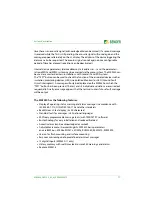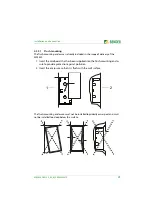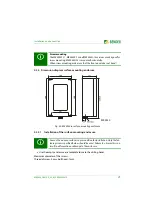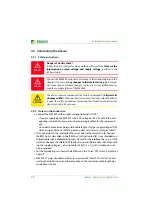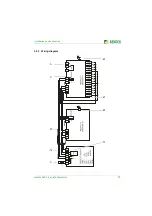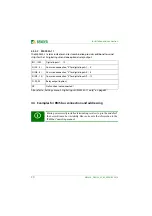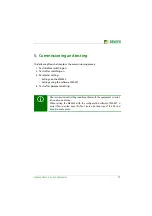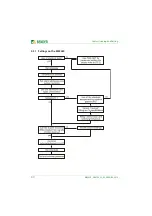
Installation and connection
26
MK2430_D00129_02_M_XXEN/09.2019
4.3 Connecting the device
4.3.1 Safety instructions
4.3.2 Notes on the connection
Connect the MK2430 to the supply voltage (terminals U2/V2).
– If you are supplying the MK2430 with a DC voltage of 24 V: Take the line volt-
age drop into account if you are using long supply cables for the supply volt-
age.
– Consider the maximum permissible cable lengths for the supply voltage U2/V2
when using an AN450 or AN410 power supply unit (refer to „Technical data“).
The connection to the internal BMS bus is made via the terminals A/B. Connect
the BMS bus as described in the "BMS bus" instruction leaflet. Use a shielded and
twisted cable with a diameter of at least 0.8 mm for the interface line (e.g. J-Y(St)Y
nx2x0.8). Connect the shield to PE (earth) at one end. Please note that, when rout-
ing the supply voltage
U
s
, a 4-wire cable (2 x BUS, 2 x
U
s
) with suitable cross sec-
tion is required.
Set the terminating resistor for the BMS bus on the "Term" DIP switch. Factory set-
ting: off.
MK2430-11 only: Use cables with a cross section of at least 0.75 mm
2
when con-
necting the digital inputs and the relay output. The maximum cable length per
connection is 500 m.
Danger of electric shock!
Follow the basic safety rules when working with electricity.
Observe the
information on rated voltage and supply voltage
specified in the
technical data!
Connect the MK2430 exclusively according to the wiring diagram in this
chapter. Do not make
any changes to the internal wiring
. Non-compli-
ant connection or arbitrary changes can lead to serious malfunctions or
even the complete failure of the MK2430.
The device contains components that can be damaged by
electrostatic
discharges (ESD)
. When work activities are carried out at when the device
is open, the safety precautions concerning the dissipation of electrostatic
electricity have to be observed.
DANGER
DANGER
CAUTION






